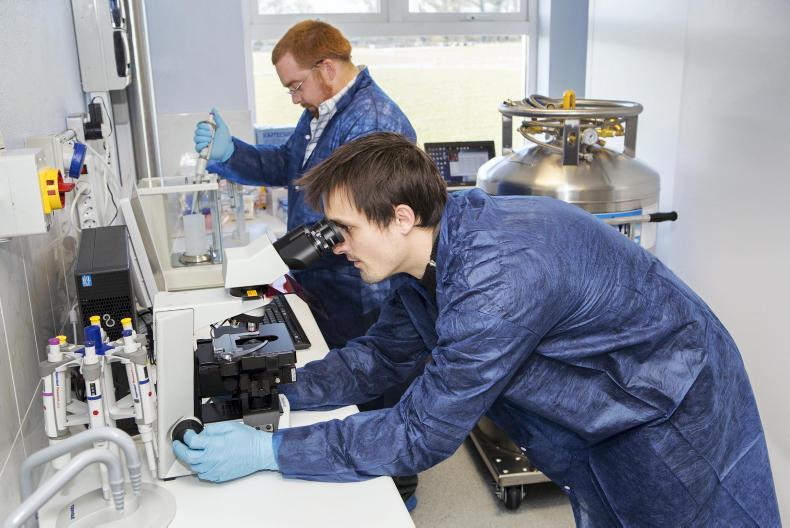Since it first became available, sexed semen has been seen by most farmers as a useful technology, but it has never been viewed as essential.
In recent years, however, poor prices and difficulty selling male dairy calves has changed peoples’ minds.
Sexed semen is now seen as the potential saviour for the Irish beef and dairy industries.
By minimising the number of low-value male dairy calves and facilitating greater output of beef-cross calves, the problem of unwanted calves will hopefully be solved.
The 2013 sexed semen trial found that the conception rate to sexed semen, whether frozen or fresh, was too low in comparison to conventional semen.
In recent years, Sexing Technologies Inc, the main company involved in sexed semen, has reported much higher conception rates than before for sexed semen compared with conventional semen. It has developed a new type of sexed semen called Sexed Ultra 4M.
It involves placing more sperm in each straw and using improved sorting technology.
The company claims that it can achieve a 90% relative conception rate.
The cows were inseminated by a technician, and sexed or conventional straws were chosen at random
This means that if the conception rate achieved with conventional semen was 60%, the conception rate with sexed semen would be 54%.
Stephen Butler ran an experiment last year to see if these results could be replicated in Ireland.
More than 8,500 cows were enrolled from 142 farms. Each farm was given 60 straws, 30 of which were sexed and 30 conventional.
The cows were inseminated by a technician, and sexed or conventional straws were chosen at random. Four of the 10 bulls used in the study were housed near the sexing lab in either the UK or the Netherlands.
The other six bulls were housed in Ireland and their fresh semen was transported to the sexing lab within six hours of ejaculation.
The aim of the study was to see if sexed semen could achieve 90% of the conception rates achieved with conventional semen.
There was evidence that the effect of the sexing treatment differed depending on the bull
Stephen says: “Semen treatment had a significant effect on conception rate. Cows inseminated with conventional semen had a mean conception rate of 59.9% compared with 45.5% for cows inseminated with sexed semen. The relative conception rate was 76.0%, which was less than the 90% we had hoped for.
“There was evidence that the effect of the sexing treatment differed depending on the bull. The biggest differences were noted for bulls with shipped ejaculates. All four of the resident bulls exceeded 80% relative conception rate, with little variation between bulls (mean = 84%, range = 81% to 87%). Of the bulls with shipped ejaculates, only one bull exceeded 80%, and four of the bulls with shipped ejaculates had a relative conception rate of less than 75%.”
So bulls that were housed close to the sorting lab had better conception rates than those whose ejaculates had to be shipped out of Ireland. However, neither group of bulls reached the target of 90% relative conception rate.
When Stephen looked at the mean relative conception rate on each participating farm, he found that about one-third of the farms had relative conception rates in excess of 90% and most of these were more than 100%. This means that on these farms, sexed semen had a better conception rate than conventional semen.
“This was an unexpected finding and suggests that the heat detection management on some farms is particularly suited to sexed semen, and warrants further investigation,” Stephen says.
His thinking now is that the timing of AI is more important with sexed semen.
Sexed semen doesn’t survive as long as conventional semen in the reproductive tract.
A new trial is starting this season using 3,000 cows that will be synchronised to control timing of ovulation and inseminated using fixed-time AI with conventional semen or sexed semen at different times.
If successful, the trial will help identify the best time to inseminate cows with sexed semen.






 This is a subscriber-only article
This is a subscriber-only article










SHARING OPTIONS: